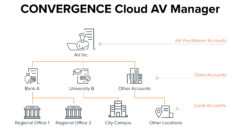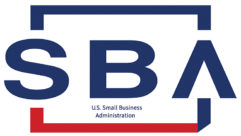Selling Service Contracts
Can you really make money on service programs? Absolutely.
Setting up your service infrastructureSecrets to serviceDealing with objectionsTIPS FOR SELLING SERVICE CONTRACTS
Attention systems integrators: Interested in adding a high-profit margin product that provides annual recurring revenue? What if this product could substantially increase your bottom line, increase customer satisfaction, and add recurring revenue in multiple areas of your business? The answers to these questions seem like a no-brainer, yet a recent Pro AV poll found that only slightly more than half of AV integrators currently sell service maintenance agreements.
Call it what you will — a fixed-price support contract, a service maintenance agreement, a service level agreement, a maintenance contract, a service contract, or even an extended warranty (although this term can be limiting) — but who wouldn’t be interested in a value-add proposition like this, especially in today’s market of dwindling equipment margins and increased competition? No matter what name you choose to call it, service can deliver an ongoing revenue stream — if you lay the proper foundation. So why do so many neglect to take advantage of this revenue-generating opportunity?
Success in selling service contracts takes commitment. You’ll need an infrastructure, a customer service philosophy, and sufficient numbers of technicians and support staff to provide the high level of service your clients will expect after the ink is dry on their contracts. You’ll need to understand the financial side of the equation: costs, overhead, and profits. And, of course, you’ll need to know how to sell this product — and how to deal with the objections you’re bound to encounter. Let’s jump right into some of the secrets to selling service agreements.
Successful service endeavors share some basic characteristics, including the proper staffing, training, and cost consciousness. First you’ll need dedicated technicians. Pulling an engineer off a design project or an installer off a screen installation to handle a critical situation isn’t the best way to build a good relationship. Think of service technicians as firefighters waiting for the siren to go off so they can race to the fire. Price your service maintenance agreements to cover the cost of having dedicated technicians whose sole focus is providing your customers with responsive service.
Providing service requires more than the ability to operate an oscilloscope and a soldering iron. Invest in training technicians for the variety of technology scenarios they’ll face in today’s AV systems. Control system certifications, DSP configuration, and network knowledge are just the beginning. Make annual training a requirement, including discussion of customer service, dress code, and rules of engagement. Remember, these technicians are the face of your company.
Technicians need to have quick access to the necessary technical information to complete each service call. Drawings, control system code, equipment lists, customer information, and account history are all important. Arm your technicians for battle, and they’ll succeed.
Behind every technician stands a good support staff. Have a live person answer incoming calls. You want to send the message to your customers that your service organization is available to them and will do everything it can to solve their problems. Make sure the person answering the phone can schedule and dispatch the technicians. Don’t have a critical support call go to a receptionist or your technician’s voicemail. Success in this business is all about serving the customer. Lastly, treat support calls to deal with operator error (switch in the wrong position, equipment not plugged in or turned on) as part of the contract. This is another opportunity to build good will and prove the value of the contract — plus it goes a long away at renewal time.
Set up service with its own profit and loss statement to track progress toward established goals. Until you take a hard look at the real costs of a service department, you can’t really know what it will take for the organization to be profitable. The most common pricing strategy in the industry is to base the price on a percentage of the system’s selling price. Of course, you’d need to set restrictions such as distance to job site or a minimum contract price. You may want to discount contract prices for large systems due to economy of scale.
How do you know if your pricing model is successful? Look at the contract costs and the service department’s P&L to help you determine if you’re on target. Here’s a typical scenario.
Assume your service group consists of:
- Three technicians
- One support person
- An overhead factor of .92
Estimated yearly cost to employ a technician:
Salary $50,000
Overhead $46,000
Total $96,000
Hourly cost (yearly cost divided by 2,080 — the number of working hours in a year) is $46 per hour. This means each technician costs you $46 per hour whether he’s at a customer’s site, sitting behind a windshield, in training, or on vacation. Each technician needs to bring in $96,000 to pay for himself (his breakeven point) and $137,142 to put a 30 percent profit margin on your bottom line.
The time and materials (T&M) model of service should only be used as a backup. To understand why, consider how many hours a technician would have to bill if he worked only on a T&M basis.
There are 1,840 available billing hours annually (number of working hours in one year is 2,080 less 160 hours for paid time off and 80 hours for training). If the field service labor rate is $115 per hour, based on the yearly cost of $96,000, a technician must bill at least 45 percent of available hours to break even — and at least 65 percent to put 30 percent on the bottom line. While this is possible, it’s difficult to produce consistently and hard to project the revenue stream accurately, because results rely on a very full schedule for each technician.
What if that yearly recurring revenue is enough to cover your expenses without the worry of having to schedule every hour of your technician’s time? That’s a huge benefit of selling service agreements. Contract revenue isn’t tied directly to actual billable hours, and can easily meet and exceed projections.
Why add service to your repertoire? Aside from increased profitability, there are other important reasons to expand your business plan. Following are some tips for establishing and selling the value-add approach.
Relationships. Your service people are a bridge between your customers and the company. Not every customer will have a major project every year, but everyone has ongoing support needs. Your service group may well have more contact with the customer on a monthly basis than your sales team.
Scheduled maintenance. Typically, scheduled maintenance is set up for two to four times a year, unless the room is high usage or 24/7. Develop a standardized checklist for scheduled onsite maintenance. Your checklist should include tests to be performed, equipment to be checked, key serial numbers, software revisions, lamp hours, and similar details. After completing scheduled maintenance, always review findings with the client, note follow-up items, and ask if they have other concerns. Have your customer sign the form, leave a copy, and place one in your files. Remember, this may be the only customer interface you’ll have if there are no emergency calls during the contract period.
Emergency or unscheduled support. The phone rings at 9 a.m. “The meeting starts at 1:00, and the CEO can see me, but can’t hear me in the New York office!” This is your opportunity to shine, if you have your organization and operational procedures in place. To handle this situation, your technician pulls up the drawings of the installation, talks to the customer, and determines it will require an onsite visit. He pulls a copy of the drawings, control system source code, and DSP files onto his laptop and hits the road. He arrives onsite, determines someone has turned off the wireless microphone receiver, turns it back on, and the customer is back in business.
A couple of important points to consider on emergency calls:
- Be sure your contract pricing is set up for an unlimited number of trips. Include “gotcha” items such as trip charges and mileage in your contract pricing rather than charging separately for them.
- Take into account telephone call-back and onsite arrival times when setting response times. Be realistic about what you can achieve, and plan on meeting the response time you quoted on every call. Remember: Response time is the one factor that clearly differentiates contract service from the T&M model.
Some clients will ask for round-the-clock support, so be sure you have a plan to offer it. Set your pricing strategy to cover costs and logistics related to after-hours and middle-of-the-night calls. Define response time and put in place a bulletproof system for contacting the after-hours support technician.
Accelerated response time should be a premium upgrade to your standard contract. Once again, be realistic and assume you’ll be held accountable to that time on every call. Contact through email or an outside call center will provide a time stamp if documentation is necessary.
Equipment repair. Always explain exclusions up front. Common exclusions include projection lamps and image burns. The fine print should also exclude user damage, floods, electrical discharge, and similar outside factors. Explain to your customer that this is a “break-fix” contract. That sets the expectation up front that you won’t be replacing every item that fails. A good practice that makes customers feel they’re getting additional value with their service contract is to offer discounts on items that are excluded from the contract (for example, lamps at 10 percent off list).
Tracking contracts and costs. You’ll need a database to track type of coverage, preventive maintenance calls, renewal dates, prices, notes, and other details of your service operation. Any standard database or contact program will work. Just customize it to your particular situation. Be sure that everyone that touches the client has access to the information in the database. Your technician always needs know that the client whose call he’s answering has — or does not have — a service contract.
You’ll also need a method to track labor and repair costs through each customer’s contract period to evaluate pricing at renewal time. Keep in mind that an atypical situation can drive the cost of an individual contract way up. Remember, this is insurance. It’s important to not raise the price based on a one-time event. Use your database to stay ahead of the renewal process, and contact the customer 30 to 60 days prior to expiration. Offer payment options such as a discount for cash in advance, as well as quarterly and monthly payments.
No question about it. You’ll face objections. Here are some of the most common complaints with suggested ways to diffuse the situations.
Doesn’t this equipment already have a warranty? The manufacturer’s warranty only guarantees repair of the equipment at no cost during the specified warranty period. It doesn’t include onsite system troubleshooting to determine which piece of gear needs attention, configuration, transportation, shipping, and so forth — all of which your service contract covers.
I paid a lot of money for this equipment. Shouldn’t this be included? The cost of maintaining a high-level service group speaks for itself. You can choose to include this as part of the system proposal, but if you do, be sure you’re aware of the cost and potential for lost profit.
Do you stock loaners, and will you bring a replacement if a system component has to be removed for repair? This is the question you’re going to hear most often, and your answer needs to be crystal clear. Tell the customer that this is a “break-fix” contract and doesn’t include providing loaners or replacements. Assure your customer you’ll evaluate the equipment and expedite repair, exchange, or replacement.
But I need the system to be operational within two hours of your arrival. The only way to guarantee maximum system uptime is to stock specific spares at the customer site. While certainly an option, this can be expensive and requires purchasing spares of critical items. Offer to price this service for the customer.
Is this an extended warranty? If this comes up, reposition what you offer by telling the customer that what they’re purchasing is a complete support package that includes the cost of equipment repair. Calling this an extended warranty reduces what you offer to the same level of support as you get on a car or clothes dryer.
I only saw you five times last year. Would it be cheaper to use you on a time and material basis? The fact is that it would be cheaper, but what they give up is the defined response time — an especially important feature when they need service right away. Plus, the scheduled maintenance feature of a good service program can prevent or anticipate repairs and minimize downtime.
Get your system salespeople onboard — Include a service contract with all proposals. Explain to the customer that this is how you do business, and this is what is best for them. Going back after the job is complete is a much harder sell.
Have a renewal strategy — Have a commissioned person responsible for renewals. Include the sales person if this is a good use of time.
Have a marketing and sales presentation —Make it short and interesting. Cover the high points such as return on investment and response time.
Sell a complete product – Don’t let it be broken down to prices for the individual services or price per piece. This always works against you. Time and materials (T&M) is the other option. Always make sure that the customer understands that without a contract, you won’t be able to guarantee response time and that contract customer service takes precedence over T&M service.
Sell results — You’ll be their partner. Peace of mind, response time, and a predictable amount to budget annually are key selling points.
Stick with your pricing structure — If they think your price is too high, offer T&M with no defined response time as an option.
Describe yourself as a specialist — Make sure your customers understand that service is an important part of your business plan, and you’re serious about it.
Barry Halligan is vice president, ISG Technical Operations, Technical Innovation, Norcross, GA. He can be reached at [email protected].








